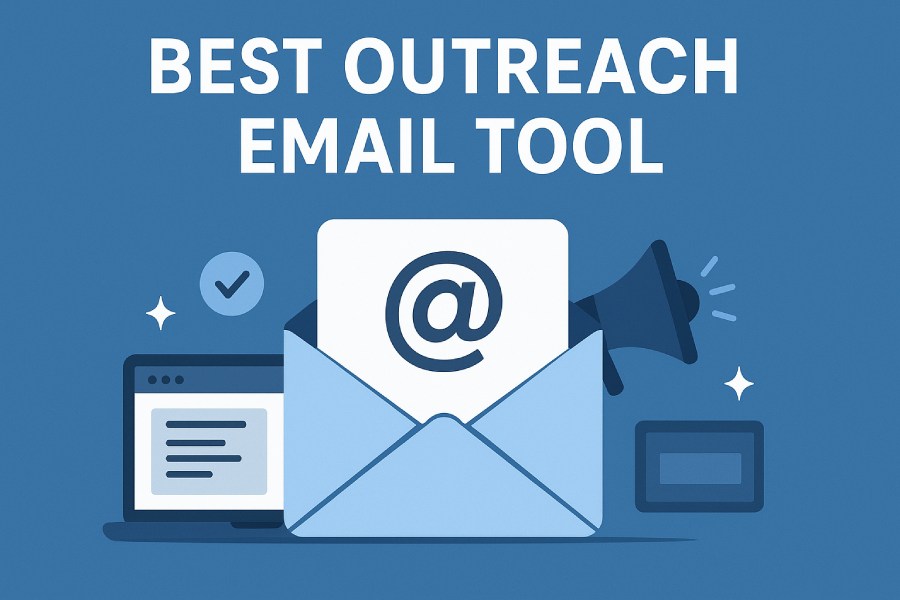How To Choose The Best Outreach Email Tool For Maximum Deliverability
When it comes to email outreach, crafting the perfect message is only half the battle — the real challenge is getting that message seen. Imagine spending hours personalizing an outreach email, only to have it land in the spam folder. Frustrating, right? That’s where the right outreach email tool becomes your secret weapon.
Choosing the best outreach email platform isn’t just about automation or sending bulk emails; it’s about ensuring your emails actually reach the inbox, not the junk pile. The ideal tool balances smart deliverability features, personalization, analytics, and compliance — helping you build genuine connections while maintaining a healthy sender reputation.
In this guide, we’ll break down everything you need to know to pick the perfect outreach email tool — from understanding deliverability factors to evaluating key features and integrations. By the end, you’ll know exactly what to look for to ensure every email you send has the best chance of landing right where it should: your recipient’s inbox.
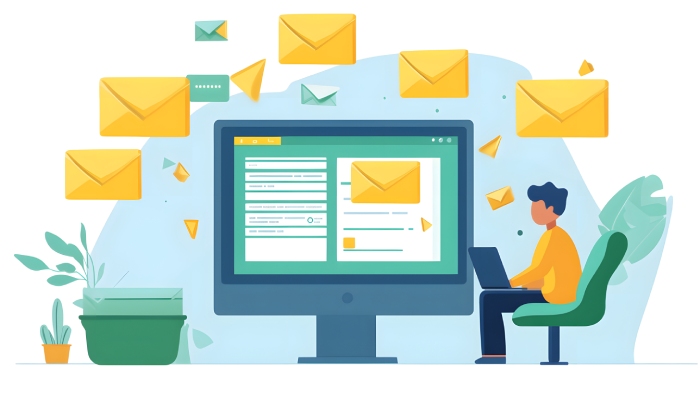
Understanding Outreach Email and Its Importance in Marketing
Outreach email plays a critical role in modern email marketing strategies, especially within the context of lead generation and outbound sales efforts. By leveraging targeted cold email software and email automation, businesses can initiate meaningful conversations with prospects, nurture leads, and ultimately drive revenue.
Outreach emails can be part of a broader outreach campaign that integrates multi-channel outreach strategies—including social media and phone prospecting—to maximize customer engagement and conversion. Effective outreach email enables companies to deploy email sequencing and email drip campaigns that deliver timely, personalized messages via email templates and personalized subject lines.
This level of email personalization significantly increases engagement by tailoring content to the recipient’s interests and pain points. Beyond personalization, outreach email tools also empower sales teams with sales enablement capabilities such as response tracking, email tracking, and reply management, which are essential for refining strategies and nurturing long-term relationships in the sales pipeline.
Well-executed outreach emails integrated into a CRM integration ecosystem—such as with HubSpot Sales Hub, Zoho CRM, or Close CRM—ensure seamless management of contacts and automated workflows that save time and improve efficiency. Combining outreach email tools like Mailshake, Reply.io, or Outreach.io with robust CRM systems enhances contact management, provides better contact enrichment, and supports lead scoring for prioritizing prospects.
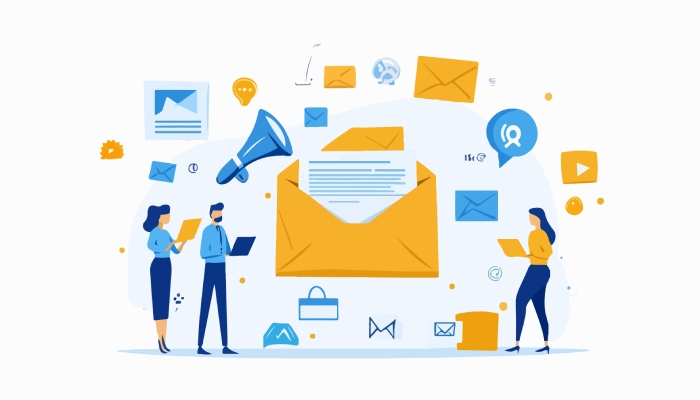
What is Email Deliverability and Why It Matters
Email deliverability refers to the ability of an email to successfully land in the recipient’s inbox rather than being filtered to spam or bouncing. High deliverability is paramount for maximizing the ROI of any mass mailing tool or bulk email sender because even the most well-crafted outreach campaigns fail if the emails never reach the intended audience.
Deliverability is influenced by multiple factors, including the sender’s IP reputation, email content quality, recipient engagement, and technical configurations like SMTP service authentication. Tools such as GMass, Mixmax, and Lemmaist provide deliverability optimization features that help maintain good sender health, reduce bounce rate management issues, and ensure compliance with anti-spam regulations.
Poor deliverability hurts open rate optimization and click-through rate performance. Lower engagement signals providers to further block future emails, creating a vicious cycle. Leveraging email verification services—like those integrated with platforms like Snov.io and Campaign Monitor—prior to sending helps maintain a clean email list management system, enhancing sender reputation.
In summary, strong deliverability translates directly to improved email ROI, better customer engagement, and more predictable pipeline outcomes.
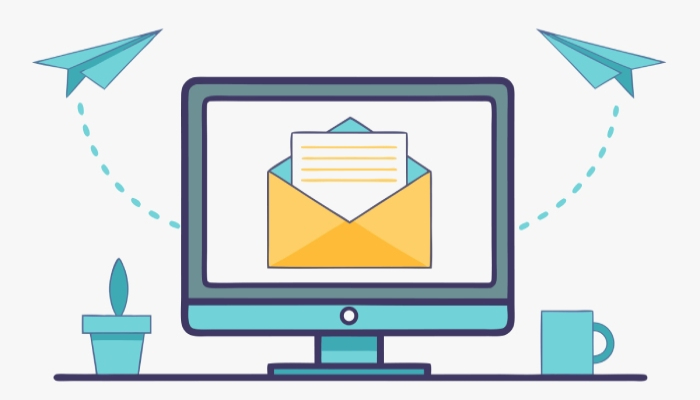
Key Features to Look for in an Outreach Email Tool
Selecting the best outreach email tool hinges on features that drive both effectiveness and deliverability optimization:
- Email Automation and Sequencing: Tools like SalesLoft, PersistIQ, and SalesHandy offer sophisticated automation workflows allowing marketers to schedule email drip campaigns, follow-up emails, and time zone scheduling to optimize engagement.
- CRM Integration: Integration with platforms like HubSpot Sales Hub, Zoho CRM, or Close CRM facilitates seamless contact management and leverages data for more precise email segmentation and lead nurturing.
- Email Personalization and Templates: Supporting dynamic fields and advanced email personalization enhances open rates. Platforms like Lemlist and Klenty excel in this area by allowing templates and personalized subject lines that resonate with prospects.
- Response and Email Tracking: Real-time email tracking, response tracking, and reply management functionalities—available in tools such as ReplyApp and Yesware—enable sales teams to monitor engagement and tailor follow-ups accordingly.
- Prospecting Tools and Contact Enrichment: Having access to an integrated prospect database or enrichment features—found in Apollo.io and SmartReach.io—helps in continuously updating and qualifying leads for better targeting.
- A/B Testing Emails and Campaign Analytics: Platforms like ActiveCampaign and ConvertKit support A/B testing emails to optimize subject lines and content, alongside detailed campaign analytics that provide insights into open rates, click-through rates, and overall performance.
- Bounce Rate Management and Deliverability Features: Ensuring the tool incorporates bounce rate management and validates contacts via integrated email verification improves sender reputation and reduces wasted sends.
- Sales Enablement and Automation: For sales teams, features embedded within tools like Groove and OutreachPlus provide comprehensive sales automation and sales pipeline visibility, connecting outbound efforts to in-depth analytics.

Evaluating Sender Reputation Management Capabilities
Central to maximizing email deliverability is maintaining a positive sender reputation, which outreach email tools can help manage. Sender reputation reflects how internet service providers perceive your sending behavior. Tools offering SMTP service support combined with built-in sender score monitoring help maintain this reputation by regulating send volumes and managing complaint rates.
To choose a tool adept at reputation management, look for features such as:
- Monitoring blacklists and spam traps
- Automated throttling of send volumes through mass mailing tool features
- Built-in bounce rate management to automatically suppress invalid contacts
- Integration with real-time email analytics to identify deliverability issues promptly
Tools like GMass, QuickMail, and Pitchbox excel in providing reputation insights and recommendations, with the added capability to automatically adjust sending patterns as needed.
Importance of Email List Management and Segmentation
Effective email list management and email segmentation are vital components of successful outreach campaigns. A clean and well-segmented list improves both engagement and deliverability by tailoring messages to relevancy, thus reducing unsubscribe rates and spam complaints.
Key practices in list management include:
- Email Verification: Removing invalid or risky addresses using tools like Snov.io and Campaign Monitor minimizes bounce rates.
- Contact Enrichment: Enhanced data via integrations with platforms such as Apollo.io creates detailed contact management profiles, enabling precise audience segmentation.
- Segmentation Strategies: Using criteria like past engagement, industry, company size, or behavior for targeted messaging optimizes the impact of email drip campaigns and lead nurturing.
- Prospect Database Maintenance: Regular cleaning and updating of the prospect database ensures ongoing campaign success.
Segmented outreach—facilitated fully by companies like Outreach.io and Mailshake—improves open rate optimization and click-through rate, driving higher email ROI and advancing leads efficiently through the sales pipeline.

Integration with CRM and Other Marketing Platforms
CRM integration remains a cornerstone for maximizing the efficacy of any outreach campaign. Leading platforms such as HubSpot Sales Hub, Zoho CRM, and Close CRM facilitate seamless synchronization between email marketing software and customer relationship management systems. This connectivity ensures real-time contact management, contact enrichment, and prospect database updates to maintain accurate email list management.
Integrations enable improved lead scoring by consolidating behavioral data and engagement metrics directly into the CRM, providing sales teams with insights necessary for warm lead outreach and prioritizing follow-ups. Automation between email client integration and CRM also supports reply management and sales automation, streamlining workflows and reducing manual data entry.
Many tools, including ActiveCampaign and Sendinblue, extend integration capabilities beyond CRM to encompass broader marketing platforms, enabling synchronized campaign analytics across inbound marketing and outbound sales channels. This unified system approach enhances campaign performance tracking and facilitates sophisticated multichannel outreach strategies.

Analyzing Email Analytics and Reporting Functions
Campaign success hinges on thorough analysis via email analytics and response tracking features. Platforms such as Yesware, Mixmax, and GMass provide detailed insights into email tracking, measuring open rates, click-through rates, and reply rates. These analytics help optimize outreach campaign effectiveness and guide continuous improvement through data-driven decisions.
Beyond traditional metrics, some solutions like Pitchbox and PersistIQ offer comprehensive reporting on bounce rate management and deliverability optimization. Detailed campaign analytics dashboards enable marketers to evaluate the success of their A/B testing emails, segmentation strategies, and email sequencing methods, ensuring consistently high engagement levels.
Furthermore, by integrating campaign insights with CRM and sales pipeline data, businesses can calculate true email ROI and identify bottlenecks in lead generation and sales enablement processes. These analytics are invaluable for refining email drip campaigns and automation workflows for maximum impact.
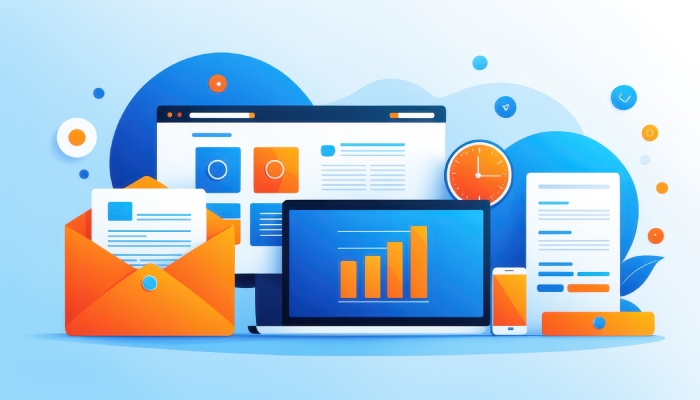
Tools for Spam Testing and Avoiding Blacklists
Maintaining stellar email deliverability requires proactive spam testing and blacklist avoidance. Cold email software providers like Woodpecker, Klenty, and Autoklose incorporate diagnostic tools to evaluate email content against spam filters, highlighting risky phrases and helping marketers optimize email personalization without triggering spam warnings.
Employing email verification services such as Snov.io and SmartReach.io also mitigates the risk of high bounce rates by purging invalid addresses and ensuring clean email list management. Integration with SMTP services through platforms like Campaign Monitor guarantees reliable message delivery and bounce rate control.
Regular monitoring of sender reputation and blacklists is a standard feature in advanced mass mailing tools like OutreachPlus and Groove, safeguarding campaigns from deliverability issues. These proactive spam testing and filtering measures are critical for sustaining effective cold outreach and bulk email sender reputation over time.

User Interface and Ease of Use
The usability of email marketing software can significantly impact team productivity and adoption rates. Platforms such as ReplyApp and QuickMail are praised for their intuitive user interfaces that streamline automation workflows, email sequencing setup, and contact management with minimal learning curves.
Drag-and-drop email templates, visual campaign builders, and straightforward A/B testing interfaces allow marketers to swiftly design and iterate outreach campaigns. Seamless navigation through campaign analytics, response tracking, and email deliverability reports ensures efficient data-driven decision-making.
Tools like Engagio and Instiller combine powerful features with user-friendly dashboards, enabling marketers and sales teams to manage complex outreach campaigns, warm lead outreach, and reply management without technical bottlenecks. Enhanced user experience fosters better adoption of sales automation and email personalization tactics, contributing to superior sales pipeline performance.
Pricing Models and Budget Considerations
When selecting the ideal email marketing software, understanding pricing structures relative to business needs is essential. Most platforms offer tiered subscription models based on the number of contacts, email volume, or access to advanced features like CRM integration, automation workflows, and multi-channel outreach.
Solutions like ConvertKit and Sendinblue provide flexible plans catering to startups and SMBs, focusing on inbound marketing and drip marketing features at affordable rates. Conversely, enterprise-grade tools such as Outreach.io and SalesHandy offer comprehensive sales automation capabilities and advanced campaign analytics at premium pricing, suited for organizations requiring robust cold email software with sales enablement focus.
Some providers, including GMass, Mailshake, and Nureply, operate on pay-as-you-go or monthly subscription bases, frequently bundling services like SMTP integration, email list management, and bounce rate management into cost-effective packages.

Customer Support and Resources Availability
When selecting email marketing software or cold email software for your outreach campaigns, the quality of customer support and the availability of educational resources play a crucial role in ensuring smooth implementation and operation. Platforms such as HubSpot Sales Hub, Outreach.io, and SalesLoft excel in providing dedicated customer service teams that offer 24/7 support via chat, email, and phone.
This accessibility is vital for troubleshooting issues related to email deliverability, SMTP service configurations, or bounce rate management. Furthermore, knowledge bases, webinars, and community forums are valuable resources for mastering advanced features like email automation, email sequencing, and multi-channel outreach strategies.
Tools like Lemlist and Mailshake provide extensive libraries of email templates designed to optimize open rates through personalized subject lines and email personalization techniques. Similarly, platforms such as ActiveCampaign and ConvertKit offer robust documentation on creating automation workflows and utilizing email drip campaigns effectively for lead nurturing and sales enablement.
A strong support system not only assists with technical details but also guides users on best practices for email segmentation, bounce rate management, and campaign analytics to increase email ROI. Whether you’re managing cold outreach or warm lead outreach, having readily available support enhances your ability to execute campaigns with confidence and ensures seamless integration with CRM systems like Zoho CRM or Close CRM for efficient contact management and prospect database enrichment.

Security and Compliance with Email Laws (e.g., GDPR, CAN-SPAM)
Ensuring compliance with global email regulations such as GDPR and CAN-SPAM is indispensable when conducting cold outreach or managing bulk email sender campaigns. Reputable email marketing software providers like Sendinblue, Campaign Monitor, and Yesware incorporate compliance features that assist users with consent management, unsubscribe options, and data privacy safeguards.
Automated processes within these platforms facilitate email list management and email verification, crucial for maintaining clean prospect databases and reducing bounce rates, a key element in deliverability optimization. Compliance also extends to time zone scheduling and reply management to prevent spam triggers and to align with recipients’ local regulations.
Sales automation tools such as SalesHandy and OutreachPlus are designed with built-in mechanisms to help users adhere to these laws by automatically inserting mandatory opt-out links and managing unsubscribe requests promptly. This not only protects your brand reputation but also ensures customer engagement is fostered within legally compliant boundaries, which is vital for outbound sales success and inbound marketing ethics.
Comparing Popular Outreach Email Tools on the Market
The market offers a variety of cold email software and email marketing software, each catering to different business needs:
- Mailshake and Lemlist specialize in email personalization and email sequencing with advanced automation workflows. They offer excellent email tracking, response tracking, and email deliverability features suitable for small to medium businesses focusing on outbound sales and lead generation.
- Outreach.io and SalesLoft are more enterprise-focused, providing comprehensive sales enablement capabilities with CRM integration, sales pipeline management, and multi-channel outreach options, including social integration. They offer detailed campaign analytics and lead scoring to optimize email return on Investment(ROI).
- HubSpot Sales Hub combines inbound marketing and outbound sales tools, supporting robust lead nurturing with integrated email drip campaigns, contact enrichment, and email client integration that enhances user workflow efficiencies.
- GMass and Woodpecker cater well to bulk email sender needs for startups and small businesses. Their mass mailing tools incorporate A/B testing emails, open rate optimization, and bounce rate management with SMTP service compatibility.
- ActiveCampaign and ConvertKit excel in automation workflows and multi-channel outreach, blending email marketing with CRM integration for efficient lead scoring and contact management.
- Reply.io and SmartReach.io offer strong automation capabilities for email sequencing and follow-up emails, integrating well with prospecting tools and helping to streamline warm lead outreach.

Tips for Testing and Optimizing Deliverability Post-Selection
Once a cold email software or email marketing software is selected, consistent testing and optimization become essential to maximize deliverability and campaign performance.
- Email Verification and List Management: Prioritize email list management and email verification to minimize bounce rates. Tools like Snov.io and Apollo.io offer integrated email verification that helps maintain a high-quality prospect database, directly impacting deliverability optimization.
- A/B Testing Emails: Utilize A/B testing emails to experiment with personalized subject lines, email templates, and content variations. Campaign Monitor and Mixmax provide intuitive interfaces for this, enabling open rate optimization and improving click-through rate metrics.
- Automation Workflows and Sequencing: Leverage automation workflows to schedule follow-up emails and handle reply management effectively. Platforms like SalesHandy and PersistIQ allow you to craft email drip campaigns tailored for lead nurturing within specific industry verticals, increasing customer engagement.
- Time Zone Scheduling: Implement time zone scheduling to send emails when recipients are most likely to engage. Tools like QuickMail and Groove excel in this feature, ensuring your outreach campaign meets prospects at optimal times, boosting response and reply rates.
- Campaign Analytics and Response Tracking: Use campaign analytics to monitor email deliverability, sales pipeline progression, and sales enablement success. Platforms such as Outreach.io and Yesware provide in-depth email tracking and response tracking, helping identify bottlenecks and areas for improvement.
- Bounce Rate Management: Actively manage bounce rates by cleaning your list regularly and avoiding spam-triggering content. Employ SMTP services recommended by your email marketing software to maintain strong sender reputation and improve overall email ROI.

FAQs
What is the difference between cold email software and email marketing software?
Cold email software is designed specifically for outbound sales and outreach campaigns targeting prospects who have not previously engaged with your brand, often focusing on email sequencing and follow-up emails. Email marketing software tends to support broader campaigns, including inbound marketing, lead nurturing, email drip campaigns, and mass mailing to existing subscribers.
How important is CRM integration for email outreach tools?
CRM integration is critical as it enables seamless contact management, lead scoring, and sales pipeline management. Integration with platforms like HubSpot Sales Hub, Zoho CRM, or Close CRM synchronizes prospect data and automates workflow, enhancing sales automation and lead generation processes.
Can I improve email deliverability with any outreach tool?
Yes. Most modern cold email software and email marketing platforms include deliverability optimization features such as bounce rate management, email verification, and SMTP service support. Leveraging these alongside A/B testing emails and time zone scheduling can significantly enhance your email deliverability.
What role do personalized subject lines play in email campaigns?
Personalized subject lines increase open rate optimization by capturing the recipient’s attention and conveying relevance. Tools such as Lemlist and Mailshake allow dynamic personalization that significantly boosts customer engagement and response tracking.
How do automation workflows benefit outreach campaigns?
Automation workflows streamline email sequencing, follow-up emails, and multi-channel outreach, reducing manual effort while maintaining timely communications. They improve sales enablement by ensuring consistent messaging and nurturing prospects through the sales pipeline effectively.
What measures ensure compliance with GDPR and CAN-SPAM laws in email marketing?
Using features like mandatory opt-out links, email list verification, consent management, and unsubscribe handling embedded in platforms like Sendinblue and SalesHandy helps maintain compliance. Additionally, respecting privacy policies and local regulations protects your brand and improves recipient trust.
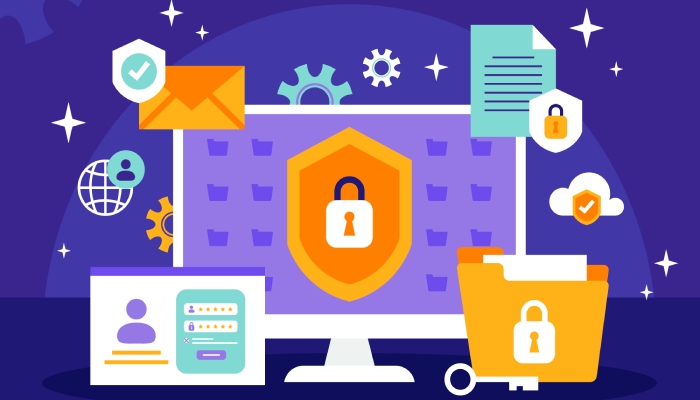
Key Takeaways
- Robust customer support and accessible educational resources are vital for maximizing the effectiveness of cold email software and email marketing software.
- Compliance with GDPR, CAN-SPAM, and other email laws is integral, with built-in platform features helping maintain legal and ethical outreach standards.
- Choosing the right outreach tool involves balancing factors like CRM integration, campaign analytics, email personalization, and automation workflows according to your team’s needs.
- Continuous testing through A/B testing emails, email verification, and time zone scheduling enhances deliverability optimization and email ROI.
- Leveraging automation workflows and multi-channel outreach tools streamlines sales enablement and lead nurturing, driving successful outbound sales and inbound marketing efforts.

